- Home
- Linda Castillo
Kate Burkholder 2 - Pray for Silence Page 3
Kate Burkholder 2 - Pray for Silence Read online
Page 3
I move the beam lower. A lot of blood now. Caked in her pubic hair. Dark rivulets that ran down the insides of both legs. I look for evidence of a bullet wound, but see nothing. In the back of my mind I wonder if she was alive when they did this to her.
The thought makes me sick. The terribleness of it frightens me on a level so deep that for a moment I can’t catch my breath. I’ve never been a crier, but I feel the burn of tears at the backs of my eyes.
“Chief? You okay?”
I choke back a sound I don’t recognize. A sound that echoes the barrage of emotions banging around inside me. For a full minute, I don’t respond. When I’m finally able to speak, my voice is level. “Call Glock and Pickles again. Tell them we need those lights and generator yesterday.”
“Yes, ma’am.”
“Tell Mona to notify the sheriff’s office. Let them know what’s going on and get some patrols out. Tell her to brief T.J., get him out patrolling. Until we figure out what happened here, we’ve got to assume there’s a cold-blooded son of a bitch out there with a gun.”
As Skid speaks into his radio, I look at the two dead girls, and I feel the crushing weight of my responsibility to them settle onto my shoulders. I’ve heard veteran cops talk about life-altering cases. Cases that haunt a cop long after they’re closed. I’ve had cases like that myself. Cases that fundamentally changed me. Changed the way I view people. The way I perceive my job as a cop. The way I see myself.
Standing there with the stench of death filling my nostrils, I know this is going to be one of those cases. It’s going to take a toll. Not only on me, but on this town I love and a community that’s already seen more than its share of violence.
CHAPTER 3
I’m standing on the back porch one puff into a Marlboro I bummed from Skid when a police cruiser hauling a small trailer barrels down the lane. Light bar and siren blaring, it slides to a halt behind my Explorer, stirring a cloud of dust that alternately glows blue and red, lending yet another layer of surreality to an already surreal scene.
Rupert “Glock” Maddox gets out of the car and goes around to the trailer, opens dual rear doors and pulls down a small ramp. A former Marine, Glock has the dubious honor of being Painters Mill’s first African-American police officer. He’s built like a young Arnold Schwarzenegger, can shoot the hair off a groundhog, and is one of the best cops I’ve ever had the pleasure of working with. As I start toward him, I hope his levelheadedness will balance out the jagged emotions roiling inside me.
He rolls a portable, diesel-powered generator down the trailer ramp, then watches me approach. Under normal circumstances, he’d probably give me a hard time about smoking. I might have tried to hide the evidence if I hadn’t been standing in the midst of a crime scene. I figure both of us are too distracted by what we face in the coming hours to bother with something so mundane.
“Must be bad if you’re smoking,” he says.
“It’s bad.” The words feel like an obscene understatement.
“I would have been here faster, but I had to pick up the generator and lights.”
“It’s okay.” A sigh shudders out of me. “None of these people are going anywhere.”
“You get the shooter?”
“I’m not exactly sure what we’re dealing with yet.”
He looks at me a little too closely as I drop the butt on the gravel and crush it out with my boot.
“Could be a murder-suicide,” I clarify.
“Shit.”
I motion toward the generator. “Get some lights set up, will you?” I start toward Skid’s cruiser. “I’m going to talk to the witness.”
I’ve met Reuben Zimmerman several times over the years. He’s a quiet, serious man, one of the few Amish I know who does not have children. He and his wife, Martha, own a small house on a couple of acres down the road. Reuben is a retired carpenter and spends most of his time building decorative birdhouses and mailboxes for the Amish tourist shops in town.
I open the back door of the cruiser and bend slightly to make eye contact with him. Zimmerman leans forward and looks at me. “Did you find Bonnie and the other children?” he asks.
Though Skid had only been following departmental procedure, I’m dismayed to see the Amish man’s hands cuffed behind his back. I pull the key out of my belt. “Turn around, and I’ll take those off for you.” I speak to him in Pennsylvania Dutch, hoping it will help break down the barrier of mistrust that exists between the Amish and the English police. This morning, I need his full cooperation.
Turning, he offers his wrists. I insert the key and the handcuffs snick open. “What are you doing here at this hour?”
He rubs his wrists. “I help with the milking.”
“Why does Amos need you when he has two sons?”
Zimmerman looks perplexed by my question, but only for a moment. “He has twenty-two head of cattle and milks twice a day. I deliver the cans to Gordon Brehm in Coshocton County.”
His answer is consistent with the absence of a milking machine and generator in the barn. Without refrigeration, there’s no way to keep the milk cold, therefore it cannot be sold as grade A for drinking. Stored temporarily in old-fashioned milk cans, it can only be sold as grade B for cheese-making, which would require a buggy trip to the local cheese-maker in the next county.
I tilt my head and snag his gaze. “Reuben.” I say his name firmly, letting him know I want his undivided attention. “I need you to tell me everything you saw when you arrived this morning.”
He nods. “I arrived early, so I sat on the back stoop for a few minutes. Usually, there is lantern light inside. Amos and I have coffee. Sometimes Bonnie fries scrapple. This morning the house was dark.”
“So you went inside?”
“I knocked, but no one answered.” He gives a small smile. “I thought, Er hot sich wider verschlofe.” He overslept again. “So I went inside.”
“How did you get in?”
“The back door was not locked.”
My brain files that away for later. Many Amish don’t lock their doors at night. It’s not that locks go against the Ordnung in any way; most simply don’t see the need. And it’s not just the Amish who are lax. I’d estimate half the folks in this county don’t lock up before going to bed. Having been a cop in a large, metropolitan city for six years, I don’t share the mind-set. I snap my dead bolts into place every night with the glee of a paranoid schizophrenic.
“Did you see anyone else inside the house?” I ask.
“Just Amos … and the two boys.”
“What about outside? In the yard? Or the barn?”
“I saw no one.”
“Any vehicles or buggies?”
“No.”
“Have you noticed any unusual behavior from Amos? Has he been under any pressure? Or talked to you about any problems?”
“Amos?” The Amish man shakes his head. “No.”
“Was there any disharmony within the household?”
“No.”
“Were there any problems between Amos and Bonnie? Or between Amos and the children? Problems with outside friends? Money problems, maybe?”
He shakes his head so vehemently, his beard flops from side to side. “Why do you ask these things, Katie?”
“I’m just trying to find out what happened.”
Zimmerman stares hard at me. “Amos lived his life in the spirit of Gelassenheit. He was a good Amish man. He was modest and yielded to God’s will. He worked hard. And he loved his family.”
“Did the Planks have any enemies?” I ask. “Were they involved in any kind of dispute?”
Another emphatic shake. “The Planks loved their Amish brethren. They were generous. If you needed something, Amos and Bonnie would give it to you and were happy to go without themselves.”
But I know that even decent, God-loving Amish families keep secrets.
For a moment, the only sound comes from the blast of the generator on the back porch and the chorus of crickets all
around us. Then Zimmerman whispers, “Are Bonnie and the other children all right?”
I shake my head. “They’re gone, too.”
“Mein Gott.” Bowing his head, he sets his fingertips against his forehead and rubs so hard the skin turns white. “Who would commit this terrible sin?”
“I don’t know.”
“I do not understand God’s will,” Reuben says.
I don’t think murder is what God had in mind for the Plank family, but since my views aren’t popular among my former brethren, I remain silent. “I’m going to have one of my officers drive you to the station so we can take your fingerprints. Can you do that for me?”
“But what about the cows?” he asks. “They must be milked.”
Dealing with cattle is the least of my worries this morning. But having grown up on a farm much like this one, I know the animals must be dealt with. “I’ll have Bishop Troyer send some men over as soon as possible. They’ll take care of the milking.”
He nods. “It is the right thing to do.”
It’s no small sacrifice for Zimmerman to ride in an English police car; it’s against the Ordnung, the rules set forth by the local church district, but he nods. “I will help any way I can.”
I close the car door and cross to my Explorer. Opening the rear hatch, I pull out my crime scene kit. It’s not very high tech. Just a box of latex gloves, disposable shoe covers, a sketch pad and notebook, a stack of miniature fluorescent orange cones used for marking evidence, a roll of crime scene tape, a couple of inexpensive field test kits, and the new digital camera I recently had approved for purchase by the town council.
I find Glock on the back porch, marking the bloody handprint for the CSU, a work light in his hand. “Zimmerman any help?” he asks over the drone of the generator.
I shake my head. “He didn’t see anything.”
“You believe him?”
“For now.”
We enter the kitchen. After being outside in the fresh air, the reek of death is suffocating. Setting the kit on the table, I remove a small tube of Vicks and dab it beneath my nose.
I offer it to Glock, but he refuses with his usual, “Can’t stand the smell.”
It’s an ongoing joke that usually garners a laugh. We don’t laugh this time around.
Quickly, we don latex gloves and shoe covers. This kind of crime scene is every cop’s nightmare. It’s spread over a large area, some of which is outdoors, which makes the collection and preservation of evidence extremely difficult. Even though I’m not yet sure exactly what we’re dealing with—a mass murder or murder-suicide—I opt to err on the side of caution and preserve as much of the scene as possible.
I hand the camera to Glock. “Photograph everything before you touch it. You know the drill.”
Nodding, he takes the camera. Neither of us speaks as we cross through the kitchen to the living room. Stopping in the doorway, I shine my Maglite on Amos Plank.
“Bad fuckin’ scene,” Glock says.
“It’s worse in the barn.”
He casts a questioning look at me.
I tell him about the teenaged girls.
“Damn.” I see his cop’s eyes taking in Plank’s unbound hands. The proximity of the handgun to the body. The exit wound at the back of his head. Like any good cop, he’s making judgments based on what he sees. “You think he did this?”
“I don’t know.” It’s the most honest answer I can give. By all appearances, Plank went berserk, murdered his family, then put the gun in his mouth and blew his brains out. But the part of me that is Amish, that will always be Amish no matter how far I stray, can’t fathom an Amish man—an Amish father—inflicting these horrors upon his family. Granted, I didn’t know Amos Plank. But I do know the Amish culture. I know violence is not part of it.
While Glock snaps photos, I walk the living room, trying to envision what might have happened. I study the position of the bodies. The wounds. The proximity of the Beretta to Amos Plank.
“What did you do?” I whisper.
It’s a keenly unsettling feeling to share such a small space with so many dead, particularly those who’ve suffered a violent death. In the periphery of my consciousness, I’m aware of Glock moving around, snapping photos. I see the flash of the camera. I hear the click and whir of the shutter, the high-pitched whine of the battery charging between shots.
“Chief.”
I glance at Glock to see him kneeling, looking at something on the floor. I cross to him as he snaps the shot.
“Got a partial print here.” He takes a second shot.
I pull one of the evidence markers from my coat. “Plenty of tread.”
“Looks like a boot. Men’s. Size nine or ten.”
I arch a brow. “You’re good.”
“That’s what my wife says.”
We exchange small smiles, and I’m glad I have him to help me keep things in perspective. I kneel beside him, study the print. It’s a partial, the front half of a shoe or boot. “Where did he pick up that blood?” I wonder aloud.
“Had to have stepped in it somewhere.” Glock glances my way. “I didn’t see any other prints.”
“Gotta be.” I rise, look around, heartened by the promise of evidence.
He shoots a final photo, gets to his feet and we look around. He walks slowly toward the small boy on the other side of the room and snaps a shot.
I go to the nearest body and kneel. It’s not easy looking at a dead teenaged boy. He’s lying facedown, his hands bound behind his back. His head is turned to the side and I see blood in his hair. Bits of brain matter and tiny white bone fragments from his shattered skull spatter the floor. His lips are parted. I see blood between his teeth. The small pink nub of a tongue that’s nearly been bitten off. Though I used the mentholated petroleum jelly, the reek of urine and feces repulses me.
Then I notice the binding at the boy’s wrists and my petty discomforts are forgotten. It’s some type of insulated wire. Speaker wire, I realize. Something an Amish man would never have in his home or anywhere else. The double knots are tied off neatly. The wire is tight enough to cut skin.
The fact that the killer used speaker wire niggles at me as I go to the kitchen. Who would have speaker wire on hand? Someone putting a sound system into their home? Their car or RV? Someone who works with audio or sound systems? Computers maybe? I’m working the possibilities over in my head when Glock calls out.
“I think I found where he picked up that blood.”
I walk to him and he motions down at the dead little boy. “There’s blood on that rug. I’d say the killer stepped on the rug and tracked it.”
He’s right. Disappointment presses into me. “I was hoping we’d find a better print.”
“Never that fuckin’ easy.” He snaps several shots of the blood-soaked rug.
I go to the kitchen and pull the sketch pad from my kit. Back in the living room, I begin a crude illustration of the scene, concentrating on the location and position of each body. I’m not a very good artist, but combined with the photos, this depiction will be a good record of how we found the scene.
I go to Amos Plank’s body. He, too, lies facedown with his head turned to one side. The pool of blood surrounding his head glitters beneath the work light. I kneel next to him. “Glock, did you get photos of the father?”
Lowering the camera, he comes up beside me. “A half dozen or so from different angles.”
That gives me the go-ahead to move the body. “Help me roll him over,” I say.
Squatting next to me, Glock places his hands on the dead man’s left hip. I put my hands on his left shoulder. “Go,” I say and in tandem we roll him onto his back.
A cup or so of blood spills from his mouth when his head lolls. Glock and I move quickly back to avoid getting biohazard on our clothes. Plank’s face goes beyond macabre beneath the stark light. I see several broken teeth. Gray-black powder burns around his lips. Nostrils filled with coagulated blood. Jaw broken, mouth hanging o
pen. A tongue shredded by a bullet.
Livor mortis has set in; the right side of his face is dark purple. Lividity occurs when the heart stops and blood, no longer being pumped, settles to the lowest part of the body. The bruise-like discoloration begins as early as half an hour after death and becomes more pronounced with time. It’s my first clue with regard to his time of death.
“Looks like he’s been dead at least an hour,” I say.
“If people knew what bullets did to their fuckin’ faces, we’d have a hell of a lot less suicides,” Glock comments.
The bullet wound appears to be self-inflicted. It entered via his mouth and exited out the back of his head, shattering his skull and taking a good bit of brain with it. Some might think it an apt end for a man who’d just murdered his family in cold blood.
“If he put the gun in his mouth and pulled the trigger,” Glock begins, “wouldn’t the concussion send him backward? Wouldn’t he land face-up?”
“Usually, that’s the case,” I say. “But if he was leaning forward. Clutching the weapon. Head down.” I ward off a chill the image conjures. “There may not have been enough momentum.”
“Hell of way to go.”
“Why would an Amish man have speaker wire?” I’m mostly thinking aloud. “He probably doesn’t own a stereo or TV. He didn’t even use a milking machine or generator for his dairy operation.”
“Hard to figure.” Glock shrugs. “Maybe he got it on sale somewhere or someone gave it to him. Uses it because it’s strong.”
“He has baling twine in the barn. Why not use that?”
“What are you getting at, Chief?”
I’m not sure how to express the thoughts running through my head without sounding prejudiced. But experience has taught me to listen to my instincts. Right now that little voice in my head is telling me this scene may not be what it looks like.
“I can’t see an Amish man doing this,” I say after a moment.
“The Amish are human, too,” he says. “They have tempers. Limits. They snap.”
He’s right. It’s rare, but the Amish have killed before. In 1993, Edward Gingerich murdered and then eviscerated his young wife. It’s one of only a few documented cases on record.

 A Hero to Hold
A Hero to Hold A Whisper in the Dark
A Whisper in the Dark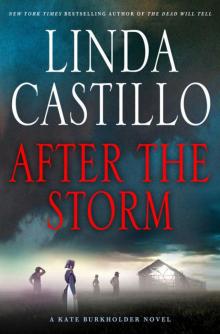 After the Storm
After the Storm A Baby Before Dawn
A Baby Before Dawn Breaking Silence
Breaking Silence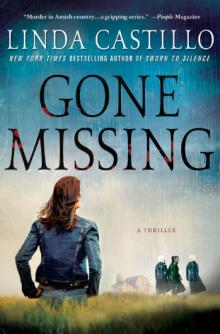 Gone Missing
Gone Missing Long Lost
Long Lost Midnight Run
Midnight Run The Dead Will Tell
The Dead Will Tell Sworn to Silence
Sworn to Silence Lay Down the Law
Lay Down the Law Safe Before Dawn
Safe Before Dawn Depth Perception
Depth Perception Seeds of Deception
Seeds of Deception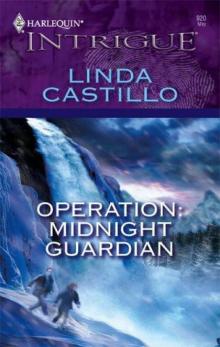 Operation: Midnight Guardian
Operation: Midnight Guardian The Perfect Victim
The Perfect Victim Operation: Midnight Tango
Operation: Midnight Tango In Plain Sight (Kate Burkholder)
In Plain Sight (Kate Burkholder) Shamed
Shamed Fallen
Fallen Her Last Breath
Her Last Breath Remember the Night (Men in Blue)
Remember the Night (Men in Blue) Dead Reckoning
Dead Reckoning Cops and ... Lovers?
Cops and ... Lovers? The Pact
The Pact A Simple Murder
A Simple Murder Among the Wicked
Among the Wicked In the Dead of Night
In the Dead of Night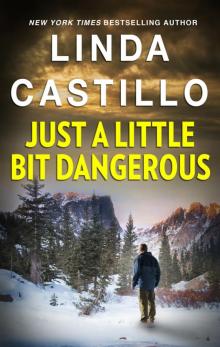 Just a Little Bit Dangerous
Just a Little Bit Dangerous The Phoenix Encounter
The Phoenix Encounter In Dark Company
In Dark Company Pray for Silence
Pray for Silence Kate Burkholder 01-Sworn to Silence
Kate Burkholder 01-Sworn to Silence Remember the Night
Remember the Night Operation: Midnight Rendezvous
Operation: Midnight Rendezvous Operation: Midnight Escape
Operation: Midnight Escape The Dead Will Tell: A Kate Burkholder Novel
The Dead Will Tell: A Kate Burkholder Novel Seeds of Deception: A Kate Burkholder Short Story
Seeds of Deception: A Kate Burkholder Short Story Gone Missing (Kate Burkholder 4) kb-4
Gone Missing (Kate Burkholder 4) kb-4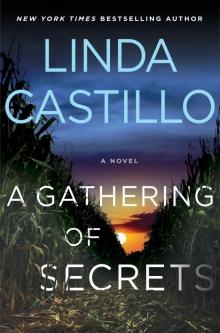 A Gathering of Secrets
A Gathering of Secrets Seeds of Deception: A Kate Burkholder Short Story (Kindle Single)
Seeds of Deception: A Kate Burkholder Short Story (Kindle Single) Pray for Silence kb-2
Pray for Silence kb-2 Operation: Midnight Cowboy
Operation: Midnight Cowboy In Dark Company_A Kate Burkholder Short Mystery
In Dark Company_A Kate Burkholder Short Mystery Sworn to Silence kb-1
Sworn to Silence kb-1 Her Last Breath: A Kate Burkholder Novel
Her Last Breath: A Kate Burkholder Novel Among the Wicked: A Kate Burkholder Novel
Among the Wicked: A Kate Burkholder Novel Breaking Silence kb-3
Breaking Silence kb-3 Kate Burkholder 2 - Pray for Silence
Kate Burkholder 2 - Pray for Silence Long Lost: A Kate Burkholder Short Story
Long Lost: A Kate Burkholder Short Story